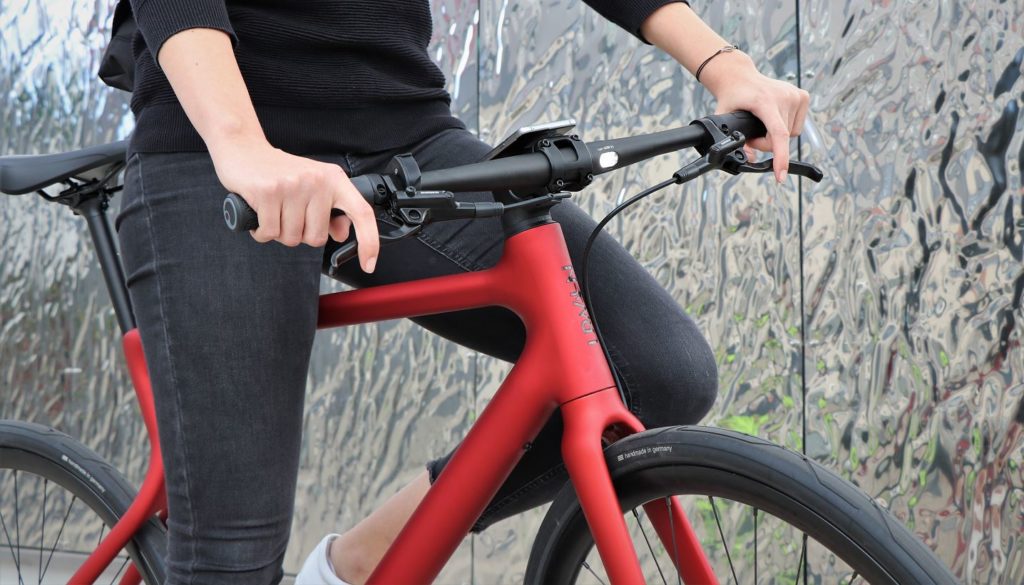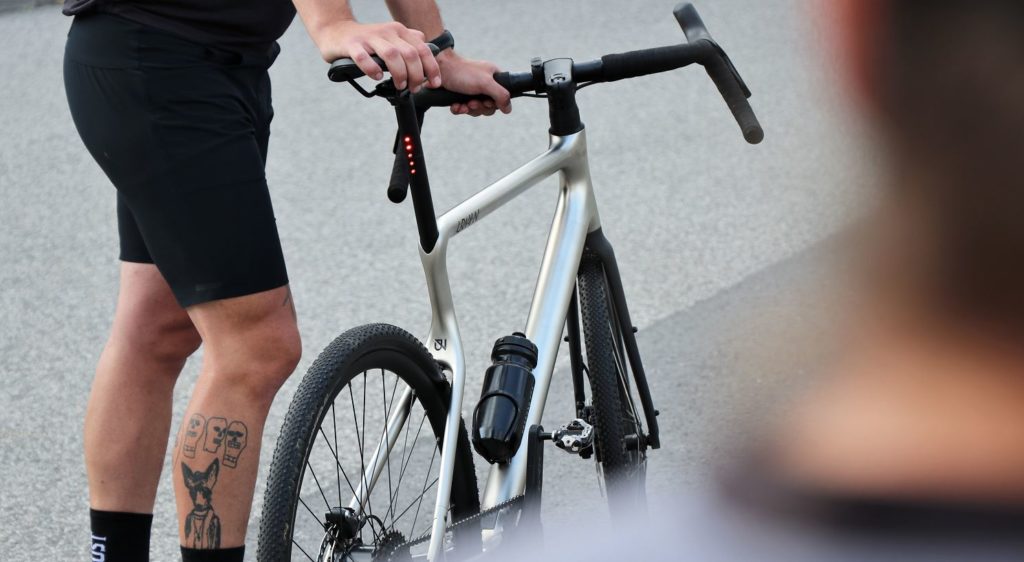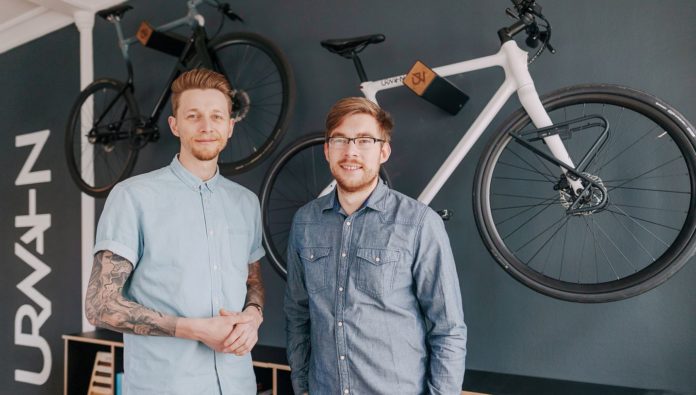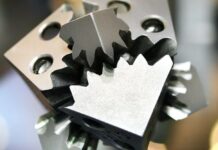In the range of 3D printing applications designed for the consumer goods industry, bikes are definitely in the top five of products that are partially or completely 3D printed. While many 3D printed bikes we cover are produced for research purpose or for a given project, commercial 3D printed bikes always raise even more interest as they confirm AM’s readiness for the consumer goods industry.
One of the latest brands we discovered in this niche market is Urwahn Bikes. The story of this brand started in 2011 when founder & CEO Sebastian Meinecke developed a special interest in purist bikes. Added to that the growing environmental concerns, the product developer and engineer for sports equipment first manufactured over 60 custom bikes for use especially in urban areas. However, they were built under the name “SME Bicycles”. Since then, he ambitions to push the development of urban areas-dedicated bikes forward.
In 2015, when he was still a Master’s student, Meinecke was applying an approach he has been taught at the university in the development of bikes: a phase-oriented process model of Integrated Design Engineering. He conducted several analyses of daily scenarios of a user on a bike, to ensure frustration-free and intuitive product use. The development and testing of the frame structure took place and led to the creation of Urwahn Bikes in 2017.
We’ve had the pleasure to appreciate the beauty of Urwahn’s 3D printed bike at formnext – Oerlikon’s booth and thereafter we caught up with the companyhear more about their story.
Urwahn Bikes : the manufacturing standpoint
While he acquainted himself with 3D printing as part of his studies, it should be noted that the technology was not that advanced for production in the bicycle industry. One of the company’s main challenges were therefore to find an appropriate uncompromising production process.
“Our innovative frame concept is composed of 3D-printed connecting elements (head tube connectors, seat tube connectors, monostay bend, beltport, bottom bracket and the two dropouts) made of 1.2709 steel and deep-drawn CrMo steel tubes. Using selective laser melting (SLM), the connectors are built up in layers from previously atomized metal powder. The individual metal layers are fused together by means of a laser. With the SLM process we can achieve a very good surface finish, as well as it is well suited for a high component complexity. Furthermore, components with a high volume can be produced with the SLM process. The SLM process also offers many advantages from a sustainable perspective. For example, the recyclability of the powder is very high and there is an optimal material utilization.
Smaller add-on parts, such as the thumb shift lever for controlling the electric drive, also come from the 3D printer and were produced using CLIP (Continuos Liquid Interface Production) and a special plastic“, the founder explains.
Like fellow parts‘ producers, Meinecke saw the same advantages 3D printing delivers in the design and dimensioning of highly complex components: given ist complexity, not only could the organic frame design be made only via AM, but it also takes less time to produce it this way.
“With 3D printing technology, we can drastically shorten the manufacturing process of our complex connecting elements and do not need any cost-intensive tools for production. The fact that there are almost no limits to the component geometry here is used by us for the organic representation and integration of, for example, the cabling or screw receptacles. Without this manufacturing process, , there would be no soft ride geometry with damping ride characteristics and no seamless organic design language ”, the CEO notes. Not to mention that, based on what we saw at Frankfurt, the flex in the frame is visually appealing since cabling and saddle clamp are discreetly hidden.
However, as far as improvements are concerned, our interviewee said they would have liked the printing speed to be faster.
Urwahn Bikes: the business model
It’s always interesting to go beyond the advantages AM can allow to see if it can really be profitable for a company. The stake is even higher for consumer goods products as most companies that produce using AM, apply a production-on-demand model.
Therefore, when asked how AM affects their business model, Meinecke replies:
“We were able to start manufacturing immediately because there was no need for expensive manufacturing tools. In this way, rapid changes in component geometries can be implemented from batch to batch, which may also make individual and custom designs possible in the future. The 3D printing process made it much easier and faster to implement an adaptation from our first Stadtfuchs Urban Bike model to the Platzhirsch e-bike. In future developments, we will benefit greatly from faster development cycles.

Of course, you still have to keep in mind that 3D printing involves high costs. Furthermore, the process speed is a challenge compared to the cost-efficient nesting of the components. We are often asked why we do not print the frame completely. This also goes hand in hand with the cost efficiency due to the component size. 3D printing still makes sense especially for highly complex parts, and of course there is also the machine limitation.
Of course, at this point in time, we can assume that conventional production is more cost-efficient, but there would also be various limitations. Disruptive 3D printing is the manufacturing step that differentiates us from conventional frame building. 3D printing allows us to design components according to manufacturing needs in the sense of lean manufacturing, which is demand-driven and regionally oriented. This allows all downstream processes to be aligned more efficiently. Overproduction is out of the question here, and inventories are also ordered with unusual restraint at Urwahn. Welding technology and joining processes allow us to achieve the innovative organic shape. The design brings many advantages that are worth the extra cost to the customer. The filigree drawn tube profiles form the basic structure of our innovative steel frame”.

While for technology and design enthusiasts, 3D printing is therefore often a purchase criterion, Meinecke highlights the importance of anew and comfortable riding experience for users.
Moving forward, we may expect Urwahn Bikes to 3D print more parts given the potential of the technology and the wide range of possibilities materials allow. In the meantime, the company remains one of the companies we will monitor in the consumer goods industry.
Remember, you can post job opportunities in the AM Industry on 3D ADEPT Media free of charge or look for a job via our job board. Make sure to follow us on our social networks and subscribe to our weekly newsletter : Facebook, Twitter, LinkedIn & Instagram ! If you want to be featured in the next issue of our digital magazine or if you hear a story that needs to be heard, make sure you send it to contact@3dadept.com






